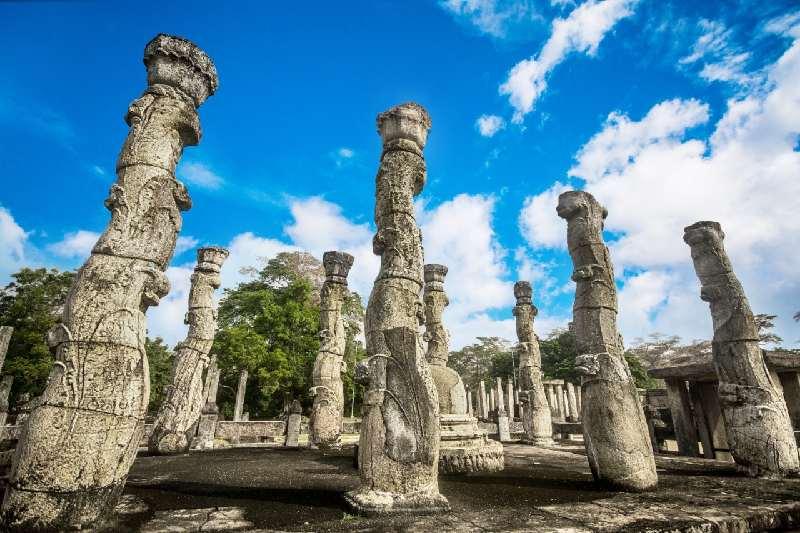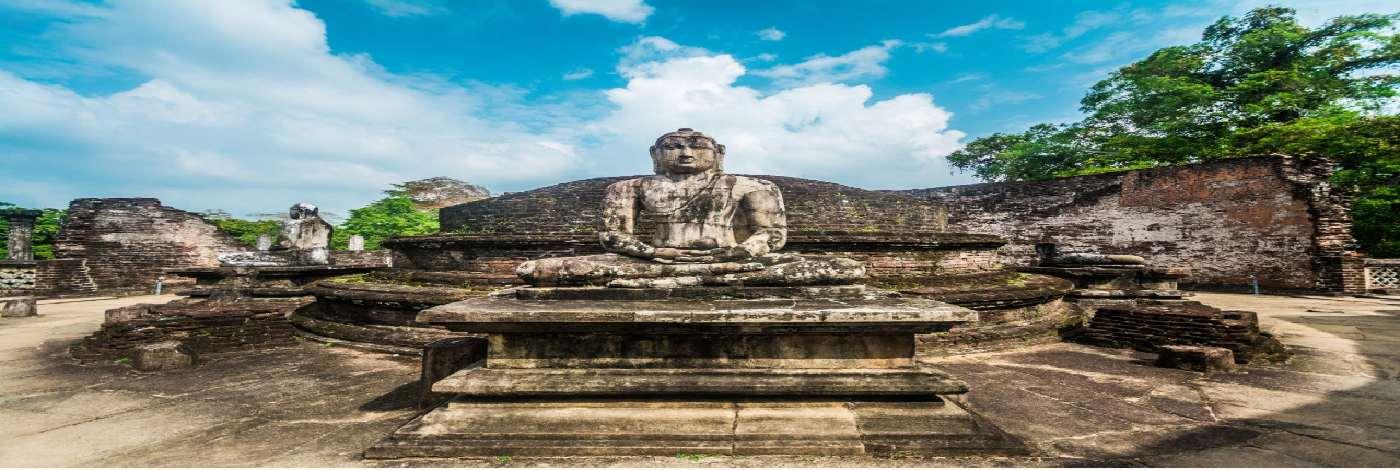
Polonnaruwa Vatadage
Location:
For more than 800 years, Polonnaruwa was the thriving commercial and religious centre of Sri Lanka, and it is a tourist destination consisting of temples and religious buildings. And for three centuries it remained the royal capital of both the Chola and Sinhalese kingdoms, and in the late 10th century when the South Indian Chola Dynasty invaded Sri Lanka, Chula Polonnaruwa chose it as the new capital and moved the capital from Anuradhapura, thanks to its strategically advantageous position to protect against attacks from the Sinhala kingdom of Rohono in the southeast, and in 1070, the Chola dynasty was defeated by the Sinhalese Kingdom (King Vijayahu I), and they kept Polonnaruwa as their capital. Most of the monuments in Polonnaruwa reflect the historical and cultural value of Sri Lanka, it provides unique arts, including sculpture and other arts and it includes an array of historical attractions and monuments such as Polonnaruwa Vatadage. Polonnaruwa Vatadage is situated in a quadrangular called Dalada Maluva in the old city of Polonnaruwa in Sri Lanka. The most sacred and the oldest monuments are located in Dalada Maluva, but the Polonnaruwa Vatadage is the most outstanding structure and it is the perfect example of the well-preserved Vatadage in Sri Lanka. Some features in the Vatadage are similar in design to the buildings in the Anuradhapura period, especially Lankaramaya and Thuparamaya.
What is Vatadage?
Also known as a dage, a cetiyagara, and a thupagara, is a pattern of Buddhist structure built in Sri Lanka. This kind of building is not similar to the known architecture found in Sri Lanka. The purpose of the Vatadage is to protect the small stupas which enshrined a relic of a Buddhist monk or to shelter the devotees. It has specific features such as it should be circular in shape, and built of brick and stone and decorated with unique cravings. Usually, it has a wooden roof and supported by stone pillars, and predominately has four entrances. It is believed that the first Vatadage built in Sri Lanka is the one at the Thuparama temple in Anuradhapura, but the most outstanding and the most well-preserved is the Polonnaruwa Vatadage. Unfortunately, only ten Vatadages still remain and they are located in Rajangana, Menikdena, Devundara, and Tiriyaya, Mihintale, Polonnaruwa, Thuparama, Lankarama, Medirigiriya, and Attanagalla.
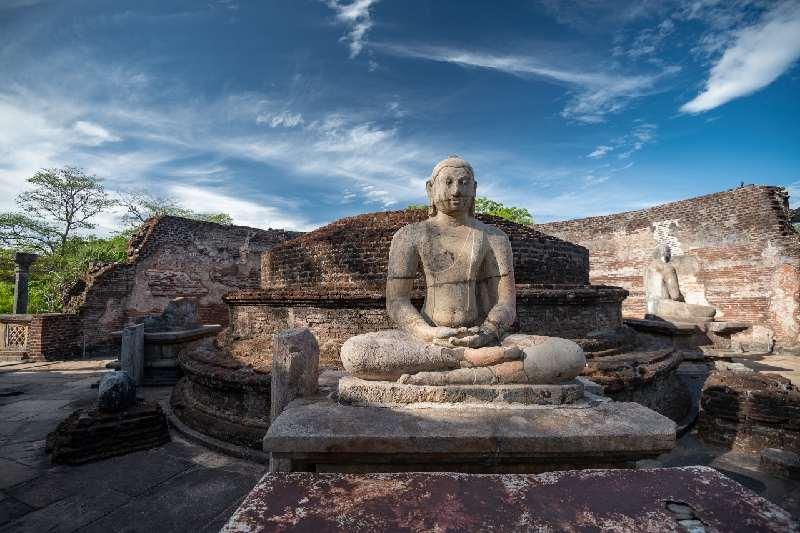
Who built it?
The real builder of the Vatadage is still a question! as historians and archaeologists are divided into two teams, each team provided various theories and pieces of evidence to prove his point of view. To demonstrate, the first team led by the ancient chronicle Culavamsa the archaeologist Harry Charles Purvis Bell suggest that the structure was built by the king Parakramabahu I in the 12th Century, they say the king build a circular in shape building to enshrine the tooth relic of Buddha, this building is believed to be the Polonnaruwa Vatadage. The other team claims that the Vatandage was built by Nissanka Malla in the 13th century, and as mentioned in the book Rajavaliya and Poojavaliya, there is an inscription in the Vatadage states that the building is one of the Nissanka Malla's constructions. However, this theory is refuted by the studies of Arthur Maurice Hocart and the translator Wilhelm Geiger and the Historian H. W. Codrington who stated that King Nissanka Malla only add some renovations to the Vatadage such as the exterior porch and the entrance, and the real builder is the king Parakramabahu I.
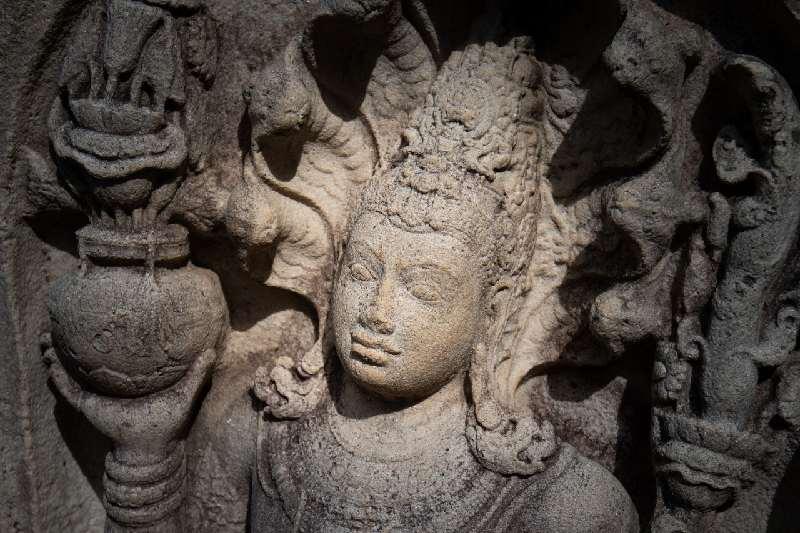
The features of the structures?
On a small stupa with a base diameter of around 8.43 m, the Vatadage has been constructed, there are two levels; the lower platform and the upper one that has the stupa. The lower platform is 37 m in diameter and around 1.30 m from the ground level, while the upper one is 24 m in diameter and around 1.60 m from the lower. The visitor can enter the lower platform via a single entrance in the north and can enter the upper one through four doorways. The structure of the upper platform is very unique; to illustrate, it is surrounded by a brick wall and the stupa is on the four sides in the centre with four Buddha statues facing each side. But these statues are not similar to the normal statues in Sri Lanka because of some peculiar features such as the robe of the Buddha is flat and the curly hair is not visible. The roof of the platform is supported by two stone pillars that are not visible. One of the most prominent features in the Polonnaruwa Vatadage is the stone carvings. Historians believe that the two muragalas (guard stone) at the eastern entrance and The sandakada pahana (moonstone) at the northern entrance is the perfect example of such architectural features belonging to the Polonnaruwa era. Moreover, they also believed that historians believe that sandakada pahanas depict the cycle of Saṃsāra in Buddhism, as those decoration elements were usually used to decorate the entrances of monastic buildings in ancient Sri Lanka. However, historians claim that the moonstones in Polonnaruwa differ from the one in the Anuradhapura era. The moonstone built during the Anuradhapura era is a semi-circular piece of stone and there are four animals carved in it ( the horse, the lion, the elephant, and the bull ), it is noticeable that the bull does not exist in the Polonnaruwa moonstones. Some theories state that the bull had been taken off because according to the Hindu beliefs the bull is a holy animal and it is the vehicle of god Shiva, so it is better to erase to prevent the visitors from trampling it while entering the temple. The bull was placed at a higher elevation of the side of the stairways instead.
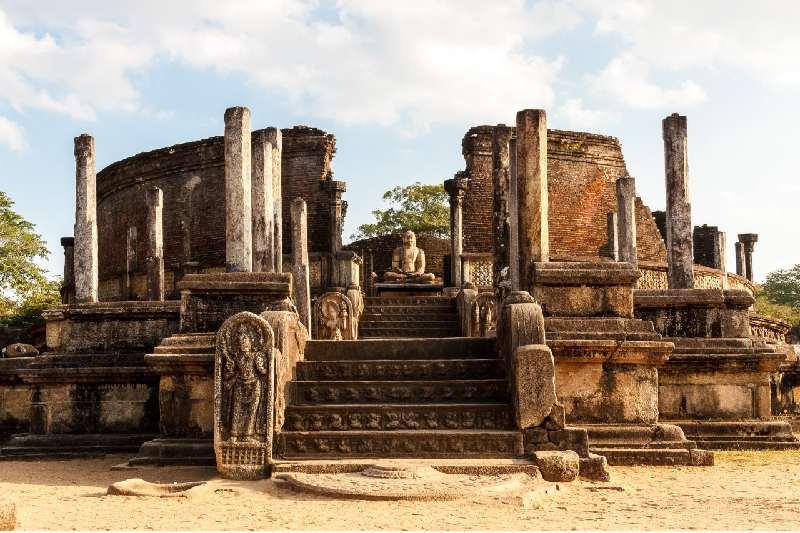
Renovation?
Southern India invaded The Kingdom of Polonnaruwa in 1215, and the Vatadage has been abandoned and there is no mention of it till 1903 when the Department of Archaeology excavated the site and it became one of the most important sightseeing in Sri Lanka.
